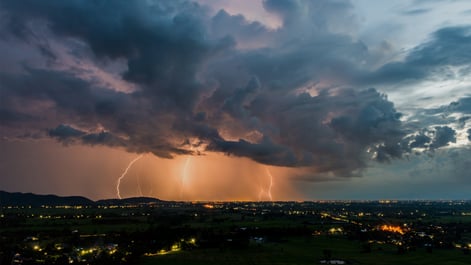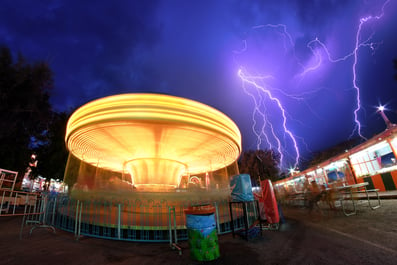More likely to be struck by lightning than attacked by a shark? The importance of lightning safety
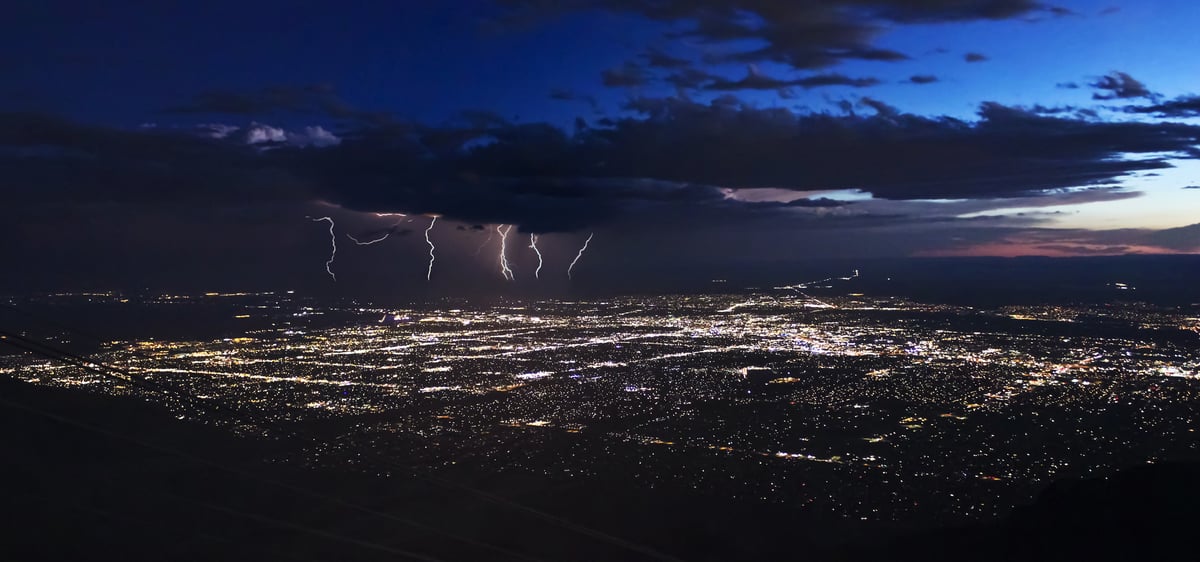
Summary
Spring is here and with that comes the threat of severe weather and lightning. Learn about lightning and how to stay safe during storms.
Key Highlights
Understand your risk: Lightning can pose significant threat to outdoor operations
When minutes matter: Use expert meteorologists to provide crucial lead time
Plan ahead: SkyGuard® alerts are actionable triggers in an emergency plan
The odds of being struck by lightning are 1 in 500,000 versus the odds of being attacked by a shark, which are 1 in 3.75 million.
Does your organization have a comprehensive lightning safety plan that takes those odds into account? This article will provide you with the information needed to create a lightning safety policy and the resources needed to inform it.

Most lightning strikes happen within 5 miles of the storm
Research indicates that 90% of lightning strikes occur within a 5 to 6 mile radius of a storm’s rainfall while 10% occur up to 10 miles away. These strikes could be cloud-to-cloud or cloud-to-ground, but your plan should treat both types of strikes equally while accounting for the risk of lightning strikes preceding rainfall.
The first strike might come fast, so don’t wait for it
A developing lightning storm can produce a cloud-to-ground bolt within 10 minutes of its formation. If that storm is developing overhead, the size of your warning radius becomes irrelevant as the first strike could be close enough to cause harm. Our meteorologist-issued SkyGuard Lightning Warnings address this risk through our proprietary lightning forecasting methodology.
The “30:30 Rule” is not the gold standard of lightning safety
- If the time between a lightning flash and the sound of thunder is 30 seconds or less, anyone outdoors should take shelter
- Wait 30 minutes after the last flash of lightning to return outdoors
- Ineffective for complex operations that take time to shutdown and restart
Why is this rule not effective for complex operations? It makes a potentially hazardous assumption that lightning is not possible 30 minutes after the last strike and is costly to operations when a lengthy shutdown equals lost revenue.
A larger warning radius won’t proportionally increase your safety
No environment is the same. Some lightning storms will produce rain, a few flashes of lightning, and then dissolve. Other lightning strikes come from large storms that are producing lightning as far as 20 miles away from the heaviest rainfall. It’s not safe to assume that a large warning radius will account for the chaos of the atmosphere on any given afternoon. Additionally, a larger warning radius will increase your volume of false alarms and raise the potential for false alarm syndrome.
The threat from lightning storms are best addressed by a meteorologist evaluating current observations, nearby storms, and analyzing storm movement on radar. While practices like the “30:30 Rule” are appropriate for recreational use by the general public, they will not provide appropriate support for complex storm situations or vulnerable operations. Trust an expert to help you develop and execute your safety plan.
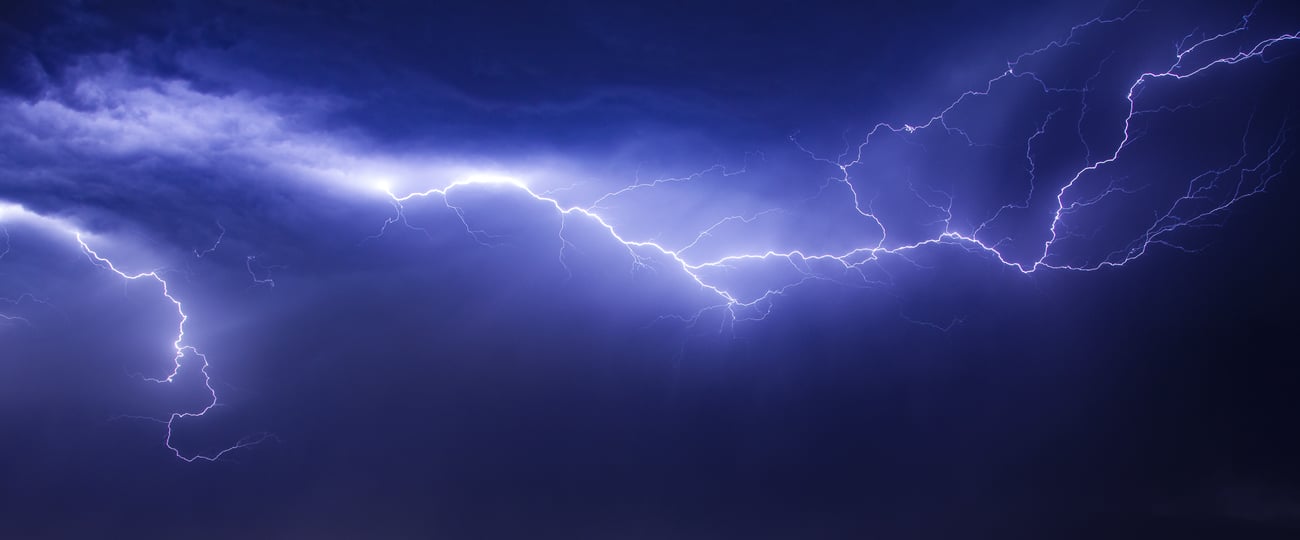
Lightning Response Tips
The weather threat most likely to cause a delay or incident at an outdoor event is lightning. Lightning storms can also produce hazardous wind gusts, flooding rain, and tornadoes, but lightning flashes will remain their most likely, visual, and alarming threat. While revisiting your operation’s guide to lightning this year, consider the tips below.
Use reliable lightning threat predictions
The first cloud-to-ground lightning strike could come within the first 10 minutes of a lightning storm’s development, so don’t wait for notification of the first strike within a warning radius to prompt your response. Meteorologists are trained to evaluate the cloud heights, temperatures aloft, and other atmospheric variables involved in lightning risk, so trust an expert to notify you when a threat is near.
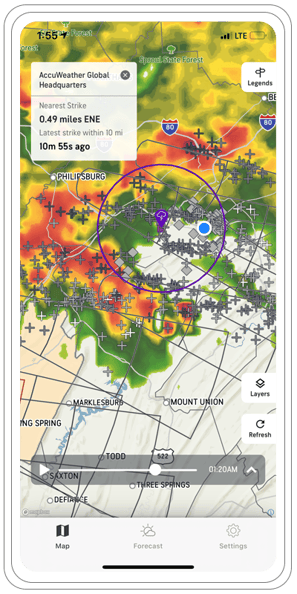
Have a clear, tested communication plan
Ensure your communication plan includes three ways to receive warnings, three ways to distribute those warnings to staff, and that plain language that will be used in all communications. Don’t forget to include the source of your warnings in all communications so that it can be verified by others.
Have an easy-to-follow version of your emergency plan for staff
If your operation uses a large, detailed emergency action plan, create a smaller action guide that fits onto a credential tag or into a wallet. This guide should include the actions that staff will be expected to take during severe weather emergencies. This will increase response efficiency and reduce confusion when your plan is activated.
Don’t leave any element of your plan up to chance
The 2011 Indiana State Fair stage collapse serves as a constant reminder that weather can expose any vulnerability in your planning, communication, operations, or construction. Although forecasts have improved dramatically in the years since, weather conditions can still rapidly change and deteriorate. Trust a meteorologist to keep you apprised of the potential threats and leave nothing to chance!
Lightning is a routine, anticipated threat for many operations across the world. Plan ahead and make sure that your organization is prepared by utilizing the expertise of AccuWeather For Business meteorologists to inform your emergency procedures.





